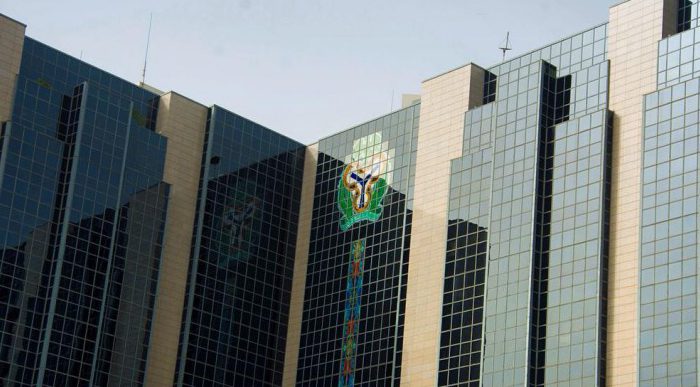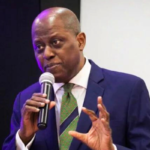Whoever will step into the office of the Governor of the Central Bank of Nigeria must by now be preparing for the challenges ahead. He has to be ready for the tasks that await him in an industry that is obviously in need of interventions.
Of the last three governors of the Central Bank of Nigeria, Godwin Emefiele was the one that faced the least challenge at the assumption of office. Professor Charles Soludo, appointed in June 2006, met a weak banking system populated with lenders that could hardly lend money. Sanusi Lamido Sanusi, who took over in July 2009, inherited a sector a third part of which had been decimated by the blitz of the global financial meltdown.
When Emefiele came on the scene, he had no major crises needing emergency operations, so he set out to embrace development banking.
These unique scenarios influenced the priorities of the governors as they began to work. Thus, Soludo, the consolidation agent, embarked on strengthening a tottering banking system by eliminating weaklings. He emphasised balance sheet size as the solution to the banking sector problem, as one analyst explained it to me. On his part, Sanusi arrived as a cleanser agent, to purge the system of wrongdoings and set it on a growth trajectory. So, unlike Soludo, Sanusi’s focus was on the quality of the balance sheet, a key metric in the banking industry. He also insisted on sound corporate governance as the way out of the sector’s problems.
How CBN contributed to rising Inflation
TCN restores power to communities affected by fire disruption in Jos
When Emefiele first arrived in 2014, he began to emphasize development finance, by which he envisioned a central bank that plays a significant role in channeling funds into specific sectors to help drive development. This approach to financing lays less emphasis on commercial rates, preferring rather to use cheap (or lower-cost) funds to promote some selected sectors.
A repeat of the above cycle seems to be hovering in the air. As Nigerians await the appointment of a substantive governor of the nation’s central bank, a capital inadequacy cycle that characterised the emergence of the last three occupants of the seat seems set for a repeat, in some ways. Therefore, the next governor of the Central Bank of Nigeria will likely emerge in a milieu of a banking sector that is in need of stabilisation, even recapitalisation.
The recent deregulation of the foreign exchange market by the CBN has predisposed the banking sector to this potential retrogression. With a significantly weakened naira, capitalisation in the sector is likely to take some bashing, and lenders who are currently much lower on the rug will be hit the most.
Long before the convergence of the parallel and I&E rates of the naira at the beginning of this June, many analysts had argued that the value of the local currency had been deliberately kept high by the central bank. Now that the inevitable has happened, and a truer value of the naira is emerging, this will certainly affect asset prices in the market. This will certainly make an impact on financial assets in the banking industry.
If the valuations fall below a certain threshold, as was the case nearly 20 years ago, it means there will be a need for the affected lenders to return to the capital market to raise additional capital.
In 2006, the local banking sector was characterised by weak, lowly capitalised lenders, unable to compete globally then. Soludo made this point clear in his famous speech on July 6 of that year, when he said: “Even the largest bank in Nigeria has a capital base of about $240 million, compared to $526 million for the smallest bank in Malaysia.
“The small size of most of our banks, each with expensive headquarters, separate investment in software and hardware, heavy fixed costs and operating expenses, and with the bunching of branches in few commercial centres – lead to very high average costs for the industry.”
The low valuation of banks at the time of Soludo’s arrival necessitated the banking consolidation exercise, which raised banks’ capital base from merely N2b to N25b.
“Soludo emphasised capital adequacy as the basis of banking sector performance regulation; Sanusi emphasized asset quality,” said an analyst.
According to him, both approaches are of the traditional CAMEL (Capital adequacy, Asset quality, Management, Earnings and Liquidity) “balance sheet” regulatory paradigm which predisposes banks to engage in dangerous behaviours inimical to the effective transmission of the policy thrusts of the central bank.’’
Consequently, the two approaches are incapable of obviating systemic crisis in the financial sector on a sustainable basis as indicated by the results of the consolidation and post-consolidation reforms of the recent past.
Soludo inherited 89 banks many of which had ceased to be banks indeed. For practical purposes, some of them were dead and only needed a courageous surgeon to declare them so. He confronted the problem with consolidation, and by the time that exercise was concluded at the end of 18 months, only 25 banking groups emerged, involving 75 banks. Fourteen of the 89 banks had to go, being unable to meet the new requirement of a 25-billion-naira capital base.
He told his audience that the banking sector consolidation “is about positioning Nigeria and Nigerians to become competitive in the 21st century.” That was on July 6, 2006. Are we back to that era again?
Beyond these, Soludo’s announcement was indeed about creating a banking environment where competitive financial institutions could be nurtured to thrive. It was about eliminating the obstacles that had impeded the emergence of a competitive banking sector.
Fast-forward to the Sanusi era. What was the industry like? For Sanusi, as he put it several times at different forums, he inherited a banking system made up of 24 lenders, one-third of which was about to collapse, weighed down by poor governance issues and insider wrongdoings, as the central bank said.
The global financial crisis had set in and Nigeria, which had largely acted like an ostrich over the issue, had to decide to confront it, one way or the other. The impact of that crisis wreaked havoc on the local banking system.
When Emefiele ascended the saddle, he made clear his inclination right from the start: development finance central banking. This, in brief, is hinged on relatively cheap capital being channeled to selected sectors of the economy. The cost of the funds for this purpose has to be lower than the average cost of funds in the market.
As Emefiele noted in his speech, many nations are employing this strategy today to drive growth and development in their economies although they may not apply the term development banking.
The next few months will certainly see some reengineering within the Nigerian banking system, as a new helmsman takes over.




